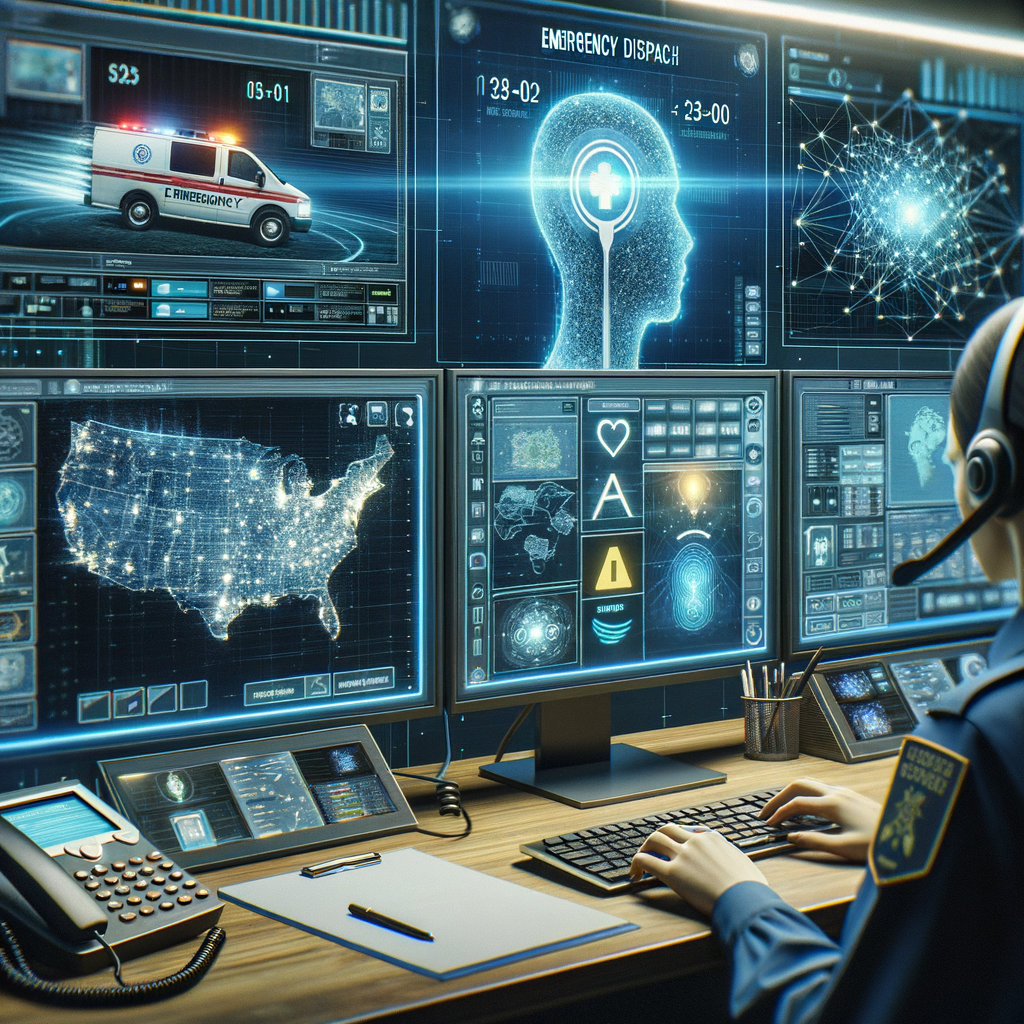How Phone AI Agents Can Assist Emergency Dispatch Units
How Phone AI Agents Can Assist Emergency Dispatch Units

Call Center – How AI Phone Agents Can Support Emergency Dispatch Units
Introduction
Imagine facing a critical emergency and hoping that the call center handling your crisis can respond instantly, effectively, and flawlessly. AI phone agents are transforming emergency dispatch units by boosting their efficiency and accuracy. Let’s delve into how this technological marvel is becoming a game changer for emergency services.
The Evolution of Emergency Call Centers
Traditional Call Centers: The Backbone of Emergency Services
Traditional call centers have long been the backbone supporting emergency dispatch units. However, while they have served us well for decades, they are not without their limitations. Human errors, delays in response time, and the overwhelming volume of calls during peak times are notable challenges.
The Advent of AI in Emergency Services
The integration of Artificial Intelligence (AI) into emergency services is nothing short of revolutionary. AI phone agents, powered by advanced machine learning algorithms, are capable of addressing many of the shortcomings of traditional call centers.
What Are AI Phone Agents?
AI phone agents are sophisticated software programs designed to handle phone calls using natural language processing (NLP) and machine learning. They can understand and respond to human speech, analyze the context of conversations, and make decisions based on their programming.
How Do They Work?
AI phone agents work by processing spoken language inputs, identifying key information, and providing relevant outputs through text or synthesized speech. They can handle multiple calls simultaneously, prioritize urgent calls, and seamlessly interface with human operators when necessary.
Benefits of AI Phone Agents in Emergency Dispatch Units
Improved Response Time
One of the most significant benefits of AI phone agents is their ability to reduce response times. Unlike human operators, AI can process information instantaneously, ensuring that emergency services are dispatched without delays.
Enhanced Accuracy and Efficiency
AI phone agents are less prone to errors compared to human operators. They can quickly analyze large volumes of data to identify patterns and correlations that might be missed by humans. This leads to more accurate dispatch decisions and efficient resource allocation.
24/7 Availability
AI doesn’t need sleep, food, or breaks. This means that AI phone agents are available around the clock, providing consistent and reliable support for emergency dispatch units, regardless of the time of day or night.
Challenges and Solutions
Data Privacy Concerns
Data privacy is a major concern when implementing AI technology in emergency services. Ensuring that sensitive information is protected is paramount. Advanced encryption and stringent data governance policies can alleviate these concerns.
Integration with Existing Systems
Integrating AI phone agents with existing emergency dispatch systems can be challenging. However, with proper planning and the right technology stack, seamless integration is achievable.
Training and Maintenance
Continuous training and maintenance of AI phone agents are crucial to their success. Regular updates and fine-tuning of algorithms ensure that they remain effective in handling emergencies.
Real-World Applications
Case Study: AI-Supported Dispatch in Urban Centers
In urban centers where the volume of emergency calls is high, AI phone agents have proven invaluable. They can handle a surge of calls during major incidents, freeing up human operators to manage complex cases that require nuanced thinking.
Rural and Remote Areas
In rural and remote areas, where emergency services are often stretched thin, AI phone agents can provide critical support. They ensure that even in less populated areas, emergencies are addressed promptly and effectively.
The Future of AI in Emergency Dispatch
The future looks promising for AI in emergency dispatch units. As technology advances, AI phone agents will become even more sophisticated, further improving response times, accuracy, and efficiency.
Continuous Learning and Adaptation
AI phone agents are designed to learn and adapt continually. With every interaction, they become smarter, more efficient, and better equipped to handle a wide range of emergency scenarios.
Integration with IoT
The integration of AI with the Internet of Things (IoT) will open new frontiers. For instance, IoT sensors can relay real-time data to AI phone agents, enabling them to make more informed decisions during emergencies.
Conclusion
AI phone agents are poised to revolutionize emergency dispatch units by improving response times, accuracy, and 24/7 availability. While challenges like data privacy and integration exist, the benefits far outweigh the drawbacks. As technology evolves, so too will the capabilities of AI phone agents, promising a future where emergency services are more efficient and reliable than ever before.
FAQs
1. How do AI phone agents differ from human operators?
AI phone agents can process information instantly, handle multiple calls simultaneously, and operate 24/7 without the need for breaks.
2. Can AI phone agents make decisions in emergencies?
Yes, AI phone agents can analyze data and context to make informed decisions, though they can also interface with human operators when necessary.
3. What measures are in place to protect data privacy?
Advanced encryption and strict data governance policies are essential to protecting the sensitive information handled by AI phone agents.
4. How do AI phone agents improve response times?
AI phone agents can process and relay information instantaneously, reducing the time it takes to dispatch emergency services.
5. Are there any limitations to using AI in emergency services?
Challenges include data privacy, integration with existing systems, and the need for continuous training and maintenance. However, these can be managed with proper planning and technology.

